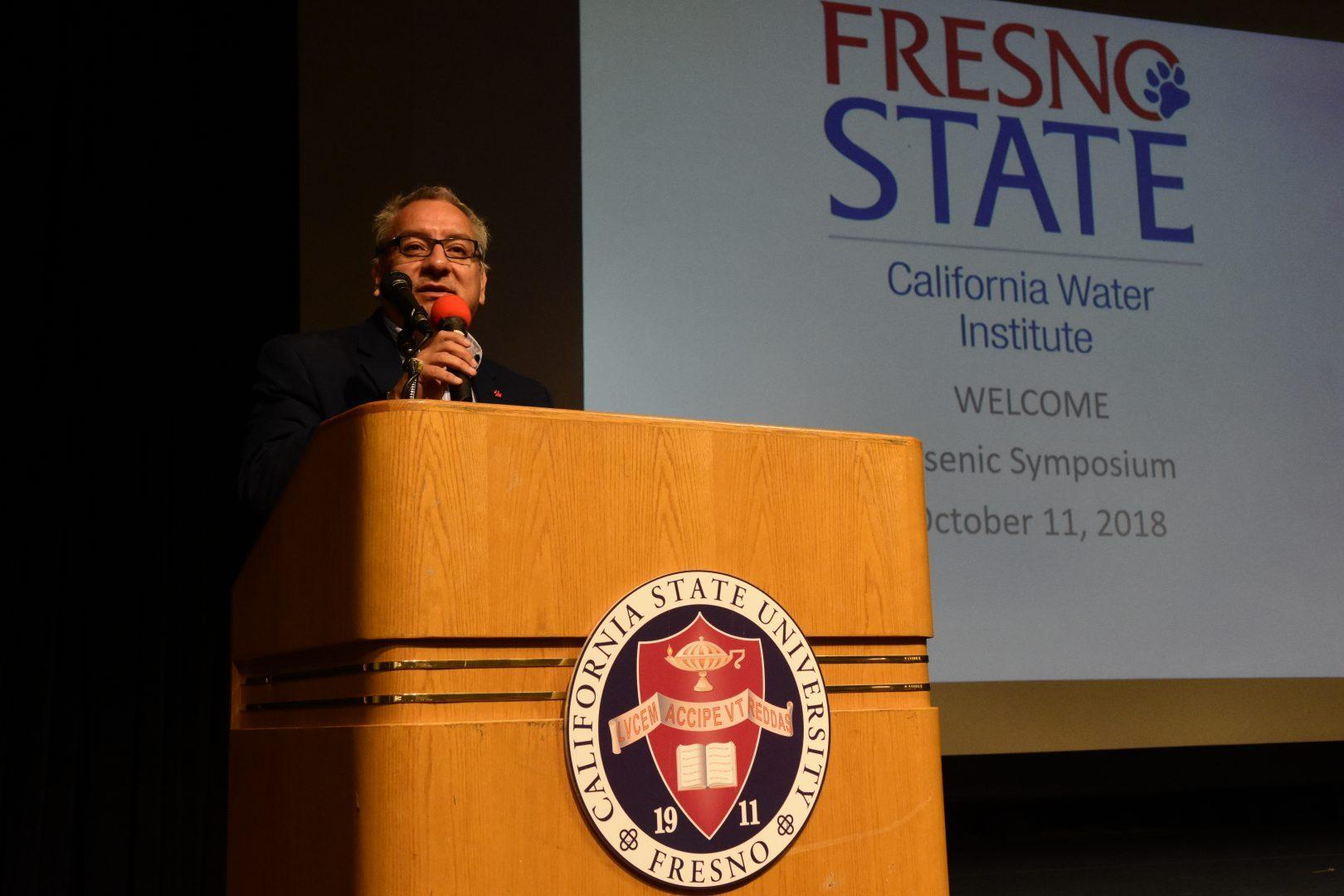The California Water Institute at Fresno State hosted the Arsenic Symposium, a community event focused on analyzing arsenic levels in groundwater.
The event, held at the Satellite Student Union on Oct. 11, brought together professional and academic experts from all over California to discuss causes of arsenic contamination and solutions to address the threat of contaminated groundwater.
Thomas Esqueda, Fresno State’s associate vice president of water and sustainability and the executive director of the California Water Institute, said the need for discussions about water infrastructure and safety is especially relevant in the San Joaquin Valley.
“Because we live in this environment where we are pretty much a rural area, the San Joaquin Valley, closely linked to ag, can’t grow food without water. I think our citizenry and the people in the Valley have a real deep appreciation for quality of water,” Esqueda said. “We live and work with it every day.”
Recent droughts and water shortages have brought the issue of water quality and availability to the forefront of the Valley’s discussion over water. With the anticipated growth of the Valley’s population, Esqueda said it is vital to begin planning and implementing infrastructure that will supply safe, dependable water for the Valley.
“There are people probably within 30 to 40 miles of the campus that go to bed at night wondering what they’re going to do about water,” Esqueda said. “There’s no lack of water issues in the Valley.”
Fresno State utilizes both public water supply wells as well as its own irrigation wells on the campus. According to Esqueda, tests for overpumping limits have not been administered on these wells.
The public supply well is regulated by the state, which has not reported any arsenic contamination problems. However, if pumping rates significantly increase to accommodate the university’s growing enrollment and water usage, potential arsenic contamination should be monitored closely, he said.
On the walls surrounding the auditorium during the symposium were large sheets of paper, each with a question printed at the top asking various questions regarding water safety and sustainability.
The event featured speakers from various disciplines of study, all focusing on what can be done to properly and safely provide enough water for a growing population in the Valley.
Esqueda said the two issues to focus on regarding water are the quality and the quantity of water in the Valley. While the Arsenic Symposium addressed quality of water issues, a future event planned for January will discuss solutions concerning the Valley’s quantity of water.
The symposium took place one day after the fourth annual “Imagine a Day Without Water” events, for which Fresno State’s California Water Institute partnered with the city of Fresno, elected officials, water utilities and community leaders to raise awareness of the need for investing in the nation’s water infrastructure.
“Imagine a Day Without Water” is a national event during which various community organizations participate in projects and events to ponder what consequences would arise if water was not readily available.
According to a news release, a single day without water nationwide could put $43.5 billion of economic activity at risk, and eight days without water could threaten over 2 million jobs.
“There are populations in our community that are dealing with contaminated water or dry wells,” Esqueda said. “People have to have food, and people have to have water.”




